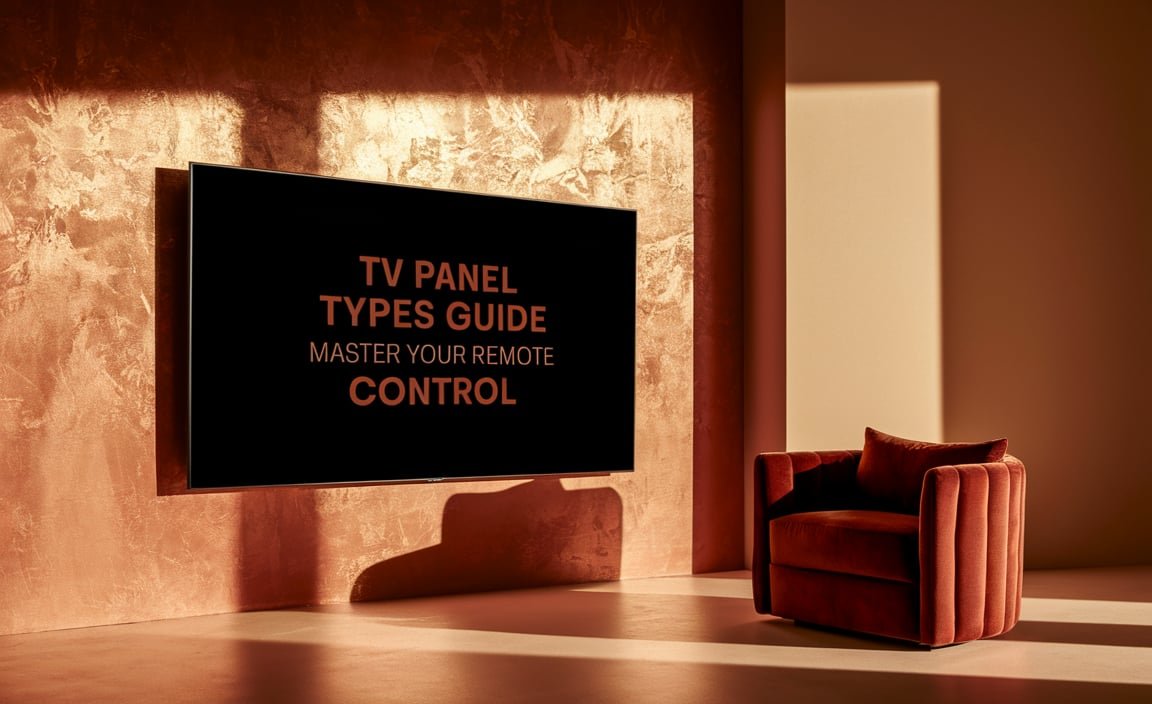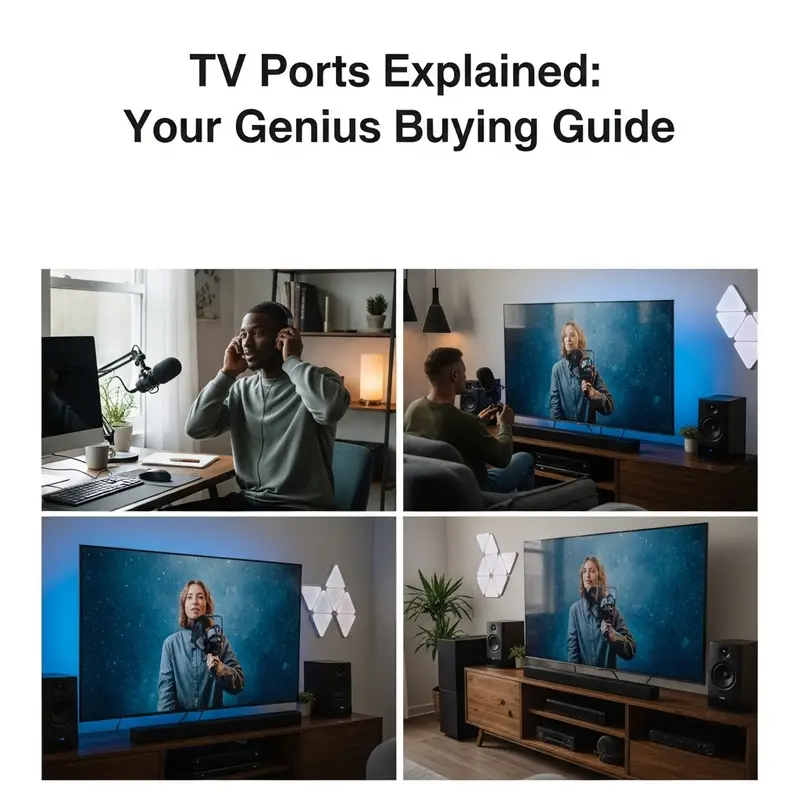Quick Summary:
For HDR on Roku vs. Fire TV, both platforms support major HDR formats like HDR10 and Dolby Vision. The actual HDR performance depends more on the TV’s panel quality and brightness than the streaming device itself. Choose based on your preferred interface and app availability.
Deciding between a Roku TV and a Fire TV can feel like a big choice, especially when you want the best picture quality for your favorite shows and movies. When we talk about HDR, or High Dynamic Range, we’re essentially talking about a more vibrant and lifelike image. It makes colors pop and details in both the bright and dark parts of the screen super clear. But with these two popular TV systems, which one does HDR better? It’s a common question, and finding a simple answer can be tricky. Don’t worry, we’re going to break down Roku TV vs. Fire TV HDR performance in a way that’s easy to understand. We’ll help you figure out what really matters for a stunning HDR experience.
This guide will show you exactly what to look for, cutting through the tech talk to get you to the heart of great HDR viewing. We’ll compare how Roku and Fire TV handle HDR, what features make a difference, and ultimately, help you make the best choice for your living room.
Understanding HDR: What You Need to Know
Before we dive into the Roku TV vs. Fire TV HDR showdown, let’s quickly chat about HDR itself. Think of it as an upgrade to the picture quality that makes a big difference. Standard Dynamic Range (SDR) TVs have a limited range of colors and brightness. HDR TVs can show a much wider spectrum, meaning more realistic colors and a much greater difference between the brightest whites and the darkest blacks. This makes images look more natural and engaging. For example, a sunset will have richer oranges and reds, and the details in a dimly lit scene in a movie will be much clearer without losing the overall dark mood.
Key HDR Technologies
When you hear about HDR, you’ll often come across a few key terms. Knowing these will help you understand what you’re seeing on the TV box or in the specs:
- HDR10: This is the most basic and widely supported HDR standard. It’s an open standard, meaning many manufacturers use it without paying extra licensing fees. It provides an improvement in color and contrast over SDR.
- HDR10+: An evolution of HDR10, this standard adds dynamic metadata. This means the picture settings can change scene-by-scene or even frame-by-frame, allowing for more precise control over brightness and color for an even better HDR effect. It’s mainly supported by Samsung and a few other brands.
- Dolby Vision: This is a premium HDR format developed by Dolby. It also uses dynamic metadata, similar to HDR10+, but it’s a proprietary technology. Dolby Vision often aims for even higher peak brightness and a wider color gamut. Many major streaming services like Netflix, Disney+, and Apple TV+ support Dolby Vision.
- HLG (Hybrid Log-Gamma): Developed by the BBC and NHK, HLG is designed for broadcast and live TV. It’s unique because it can deliver HDR and SDR content simultaneously to different TVs, making it suitable for wider compatibility in broadcast environments.
Roku TV and HDR Support
Roku has become a favorite for many people thanks to its simple interface and wide range of apps. When it comes to HDR, Roku devices and Roku TVs are generally well-equipped to handle the latest standards. Most new Roku TVs and Roku streaming devices (like the Roku Streaming Stick 4K+ or Roku Ultra) support both HDR10 and Dolby Vision. This broad support means you can enjoy HDR content from most popular streaming services without major compatibility issues.
The experience of HDR on a Roku TV, however, is also heavily influenced by the specific TV model you have. A Roku TV is essentially a television built with Roku’s smart TV operating system. Manufacturers like TCL, Hisense, and Philips make Roku TVs. The quality of the display panel—how bright it can get, how well it represents colors, and its contrast ratio—will have a much bigger impact on how good the HDR looks than the Roku software itself.
How Roku Handles HDR Content
When you play an HDR movie or show on a Roku device or Roku TV, the system automatically detects the HDR metadata. It then communicates this information to the TV’s display. If the TV itself is capable of processing and displaying HDR content at its best, you’ll see the benefits.
For instance, if you’re watching a Dolby Vision title on Netflix through your Roku TV, and your Roku TV supports Dolby Vision, the device will signal the TV to use Dolby Vision settings. This includes adjusting the brightness, contrast, and color to match what Dolby Vision intended. If your Roku TV only supports HDR10, it will still play the content, but it will downscale it to HDR10. This is still better than SDR, but you won’t get the full Dolby Vision experience.
Pros and Cons of Roku HDR
Pros:
- Wide Format Support: Generally supports HDR10 and Dolby Vision across most of its newer devices and TVs.
- Simple Interface: Easy-to-navigate menus make finding HDR settings straightforward.
- App Availability: Access to all major streaming apps that offer HDR content.
- Growing Hardware Options: A wide range of Roku TVs from different manufacturers offers options at various price points.
Cons:
- TV Dependent: The actual HDR quality is heavily reliant on the specific Roku TV’s display technology (e.g., peak brightness, local dimming).
- HDR10+ Limited: Support for HDR10+ is less common on Roku devices and TVs compared to Dolby Vision.
Amazon Fire TV and HDR Support
Amazon’s Fire TV platform, including Fire TV Edition smart TVs and Fire TV streaming devices like the Fire TV Stick 4K Max, also offers robust HDR capabilities. Fire TV devices typically support HDR10 and Dolby Vision. Some higher-end Fire TV devices and TVs might also include support for HDR10+, though this is less common than Dolby Vision.
Similar to Roku, the real magic of HDR on a Fire TV depends on the television itself. Fire TV Edition TVs are made by brands like Insignia and Toshiba. The smarts of the Fire TV come from Amazon’s software, but the picture performance is all about the hardware of the display. A cheap Fire TV might have HDR capabilities in name, but if its screen can’t get very bright or show a wide range of colors, the HDR effect will be minimal.
How Fire TV Handles HDR Content
When you stream content with HDR on a Fire TV device or Fire TV Edition TV, the system identifies the HDR format. It then sends the appropriate signal to the TV’s display. If the TV is designed to handle Dolby Vision or HDR10+, it will utilize that format for the best possible picture. If the TV is only HDR10 capable, the Fire TV will ensure the content is delivered in that standard.
Amazon’s interface also allows for some manual adjustments within the display settings, giving you a bit more control over how HDR content is presented. You can often find options related to HDR or picture enhancement in the settings menu, though again, the effectiveness is limited by the TV’s hardware.
Pros and Cons of Fire TV HDR
Pros:
- Good HDR Format Support: Supports HDR10 and Dolby Vision, with increasing support for HDR10+ on some devices.
- Integrated Amazon Ecosystem: Seamless integration with Amazon Prime Video and other Amazon services.
- Voice Control: Alexa integration offers convenient voice commands for playback and search.
- Value Options: Fire TV devices and TVs are often available at competitive price points.
Cons:
- TV Hardware is Key: Like Roku, the ultimate HDR picture quality is determined by the TV display itself.
- Interface Can Be Cluttered: Some users find the Fire TV interface a bit busier than Roku’s.
- App Spotting: While most apps are available, occasionally some niche apps might appear on Roku first or vice-versa.
Roku TV vs. Fire TV HDR: The Head-to-Head
When we directly compare Roku TV vs. Fire TV HDR, it’s crucial to remember that both platforms are very similar in their basic HDR capabilities. Both aim to deliver enhanced contrast and color by supporting widely adopted HDR standards.
Key Comparison Points for HDR
Let’s break down the key differences (and similarities) regarding HDR:
| Feature | Roku TV | Fire TV |
|---|---|---|
| HDR10 Support | Yes (Standard) | Yes (Standard) |
| Dolby Vision Support | Yes (On most newer models) | Yes (On most newer models) |
| HDR10+ Support | Limited/Rare | Increasing, but still less common than Dolby Vision |
| HLG Support | Generally supported | Generally supported |
| User Interface for HDR Settings | Simple, often automatic detection. Some manual adjustments possible on TV settings. | Slightly more options for manual tuning within Fire TV settings, plus Alexa control. |
| Core Performance Driver | The TV’s display panel hardware (brightness, color gamut, local dimming) | The TV’s display panel hardware (brightness, color gamut, local dimming) |
| Content Source Impact | Both rely on streaming services like Netflix, Disney+, Apple TV+, etc. | Both rely on streaming services like Netflix, Disney+, Apple TV+, etc. |
What Really Matters for HDR Quality
This is the most important takeaway for anyone looking for the best HDR picture: the television’s display technology is paramount.
A high-end TV with a bright panel, excellent contrast (often achieved with good local dimming), and a wide color gamut will make HDR content look stunning, regardless of whether it’s running Roku or Fire TV. Conversely, a budget TV with a dim screen and poor contrast will struggle to show the benefits of HDR, even if it supports Dolby Vision or HDR10+.
Think of it this way: Roku and Fire TV are like the operating systems of your computer. They manage your apps and how you interact with your device. The TV’s panel is like the graphics card and monitor. You can have the best software in the world, but if your hardware isn’t good, the overall experience won’t be top-notch.
This concept is well-understood in the display industry. For example, organizations like the Display Daily often discuss how display characteristics define the HDR experience, rather than just the source device.
Performance Nuances: Brightness and Color
When comparing Roku TV vs. Fire TV HDR, look for these specific display features on the TV itself:
- Peak Brightness: Measured in ‘nits’. Higher nits mean brighter highlights, crucial for HDR. Aim for TVs that can hit at least 400-600 nits for a noticeable HDR effect, and 1000+ nits for a truly spectacular experience.
- Contrast Ratio: The difference between the brightest white and the darkest black. Higher contrast means deeper blacks and brighter whites, leading to more depth in the image. OLED TVs excel here, but high-end LED/QLED TVs with good local dimming can also be very good.
- Color Gamut: This refers to the range of colors the TV can display. HDR requires a wider color gamut (often described as covering 90% or more of the DCI-P3 color space) to show those richer, more vibrant hues.
- Local Dimming: On LED/QLED TVs, this feature allows the backlight to be dimmed or turned off in specific zones of the screen, improving contrast and black levels. The more zones, generally the better.
Both Roku and Fire TV devices will pass through the HDR information, but it’s the TV’s ability to reproduce that information that counts.
Which Platform Offers a Better HDR Experience?
Given that the TV’s hardware is the defining factor, the Roku TV vs. Fire TV HDR “winner” isn’t about the streaming platform itself, but about the specific TV model you choose.
Choosing the Right HDR TV
When you’re shopping, consider these steps:
- Identify Your Budget: How much are you willing to spend? This will significantly narrow down your TV options.
- Prioritize Display Technology: For the best HDR, consider TVs with Quantum Dot (QLED) technology or OLED panels. These offer superior color and contrast.
- Check HDR Specs: Look for TVs that explicitly state high peak brightness (e.g., 600+ nits) and wide color gamut coverage (e.g., 90%+ DCI-P3).
- Read Reviews: Independent reviews from publications like Rtings.com often provide detailed measurements of HDR performance, contrast, and brightness for specific TV models, regardless of their smart platform.
- Decide on Smart Platform: Once you’ve found TVs with excellent HDR capabilities, then decide whether you prefer the Roku interface or the Fire TV interface.
Roku vs. Fire TV: Interface and App Ecosystem
While HDR performance may be similar on comparable hardware, the user experience can differ:
- Roku: Known for its straightforward, no-nonsense interface. It’s easy to navigate, and the app store is comprehensive, with almost every major streaming service available. Roku’s focus is on simplicity and ease of use.
- Fire TV: Offers a more content-forward interface, often highlighting personalized recommendations and Amazon’s own services. It features robust voice control through Alexa. While it has most apps, sometimes there are slight delays or differences in app availability compared to Roku.
Your preference for which interface you find easier or more enjoyable to use might be the deciding factor. If you heavily use Amazon services and Alexa, Fire TV might be a more natural fit. If you prefer a clean, uncluttered experience, Roku might be your choice.
Frequently Asked Questions (FAQ)
Here are some common questions about Roku TV vs. Fire TV HDR:
Q1: Do all Roku TVs and Fire TVs support HDR?
A1: No, not all of them do. While most newer models from the last few years support some form of HDR (like HDR10), older or very budget-friendly models might not. Always check the specifications for HDR10, HDR10+, or Dolby Vision support before buying.
Q2: Is Dolby Vision better than HDR10?
A2: Generally, yes. Dolby Vision uses dynamic metadata, meaning it can adjust picture settings scene-by-scene or frame-by-frame. This leads to more optimized contrast and color for each specific scene, often resulting in a more impressive HDR effect than static HDR10 metadata. However, the difference is most noticeable on TVs capable of high brightness and contrast.
Q3: Can I get HDR from my streaming apps like Netflix or Disney+ on Roku/Fire TV?
A3: Yes, if your Roku or Fire TV device/TV supports the specific HDR format and the app also streams in HDR. Most popular apps like Netflix, Disney+, Apple TV+, Amazon Prime Video, and others offer HDR content. You’ll usually see an HDR or Dolby Vision logo next to the title if it’s available in that format.
Q4: How do I know if my TV is actually showing HDR content?
A4: Many TVs will display a brief notification on screen when HDR content starts playing, often saying “HDR” or “Dolby Vision.” You can also check the picture settings menu on your Roku or Fire TV; it often indicates the current signal type (e.g., “HDR,” “Dolby Vision”).
Q5: Is a 4K HDR TV essential for streaming?
A5: It’s not essential, but it greatly enhances the viewing experience, especially for movies and high-quality dramas. 4K provides more detail, and HDR adds far more impact with better colors and contrast. For the best modern viewing, 4K HDR is highly recommended.
Q6: Does HDR use more internet bandwidth?
A6: HDR content, particularly 4K HDR, generally requires more internet bandwidth than SDR content because it’s a higher-quality stream with more data





